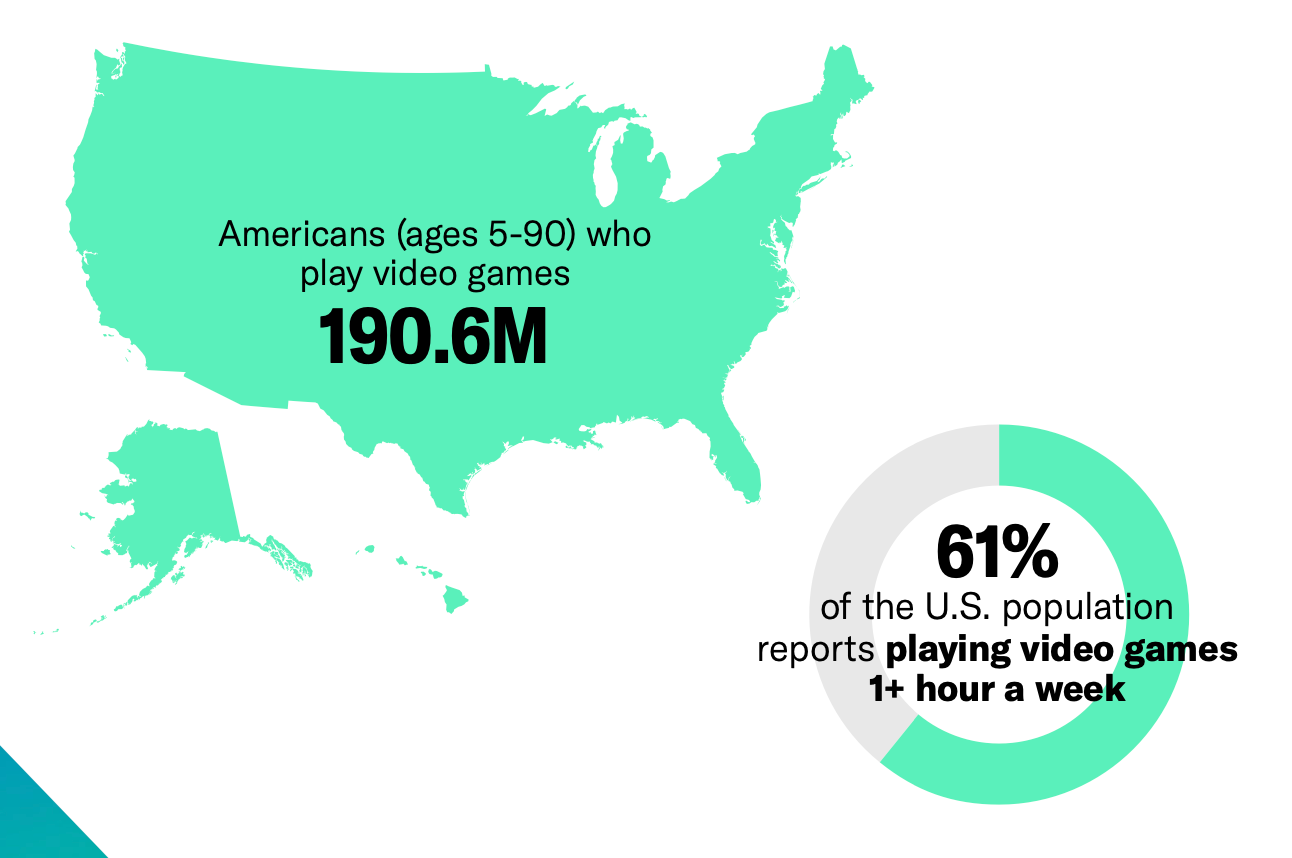ESA: Facts about the US Gaming Industry in 2024
The global US gaming impact exceeds $100B according to the ESA.
The US gaming market in 2023 amounted to $57.2 billion. $48 billion was spent on content; $6.6 billion on gaming hardware; $2.6 billion on gaming accessories
ESA estimates that the global economic contribution of the American gaming industry in 2023 was $101 billion. The contribution to the US GDP in 2023 was $66 billion.
GameDev Reports Newsletter offers promotion opportunities to gaming companies. Reach out to learn more.
190.6 million Americans play games. 61% of the US population plays games for over 1 hour weekly.
The average age of a gamer today is 36 years. Twenty years ago, the average age was 29 years. The percentage of gamers over 50 years old is 29% - in 2004, it was only 17%. Meanwhile, the rate of gamers under 18 years old decreased from 34% in 2004 to 24% in 2024.
53% of gamers are male; 46% are female. 1% identify as non-binary. 11% identify as LGBT.
People mainly play to relax and have fun. Overall, the American audience believes that games help cope with stress; develop social skills; improve problem-solving skills; and enhance cognitive functions.
78% of gamers play on mobile devices. PCs and consoles are more popular among Generations Z and Alpha. VR devices are most interesting to millennials.
The female audience is larger on mobile devices, while the male audience is larger on PCs, consoles, and VR.
78% of American households played on at least one device during the year.
19% of players over 8 years old have mobile devices, PCs, and consoles at home.
55% of players play with others every week. 88% generally play games with an online component. In 1999, this was only 18%.
Games have become an important element of social interaction with friends and family.
72% of parents play games with their children. They note that it is fun (58%); helps spend quality time together (51%); and is a great opportunity to socialize with the child (49%).
63% of players believe that games offer the greatest value for their money compared to streaming services, music, movies, and books.












